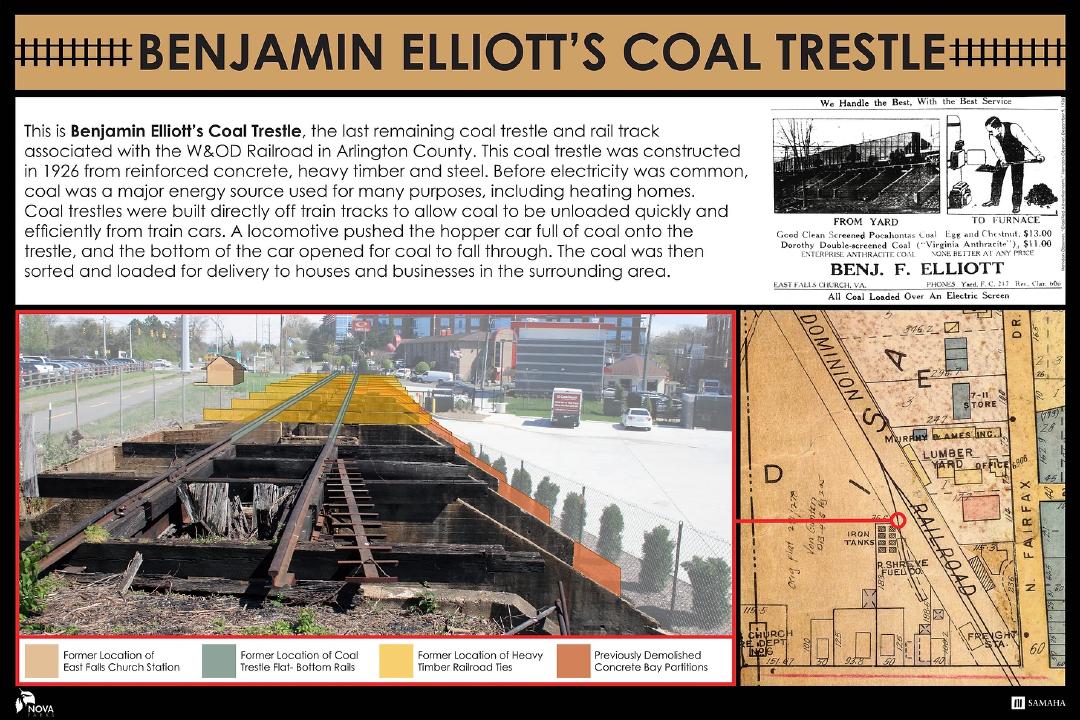Benjamin Elliott’s Coal Trestle

Benjamin Elliott’s coal trestle is the last remaining coal trestle and rail track associated with the W&OD railroad in Arlington County.
Benjamin Elliott’s Coal Trestle was built in 1926 in the East Falls Church neighborhood of Arlington County. Small-scale commercial coal trestles like this one were instrumental in the processing of coal for local delivery to residences and businesses. This coal trestle is a visual reminder of a critical early 20th-century energy infrastructure that fueled the electrification and development of Arlington County and the region. There are no other coal trestles extant within the County.
The significance of Benjamin Elliott’s Coal Trestle is augmented by its association with the W&OD Railroad. The rail line provided a variety of services over its extensive period of operation, including the transportation of goods, freight service and passenger service to Washington, D.C. The tracks laid for the coal trestle in ca. 1926 are the last remaining visible rails or tracks associated with the W&OD Railroad in Arlington County.
The coal trestle, along with its remaining railroad ties and tracks, is one of only a few remaining early-twentieth-century industrial structures along the W&OD Trail. In addition, the trestle’s rails and ties are the last remnants of the former W&OD Railroad’s tracks that remain visible in their original location. While foliage partially obscures the trestle for much of the year, the structure remains a visual feature along the trail. It is a reminder of the early industrial/commercial nature of the East Falls Church section of Arlington County, the importance of small-scale businesses to the delivery of coal to residences and businesses, the impact of the W&OD Railroad (and its predecessors) to the transportation history and physical development of Arlington, and local and regional railroad history.
Coal trestles were built directly off train tracks, allowing coal to be unloaded quickly and efficiently from train cars. A locomotive pushed the hopper car full of coal on the trestle, and the bottom of the car opened for coal to fall through. The coal was then sorted and loaded for delivery to houses and businesses in the surrounding area.
Images

